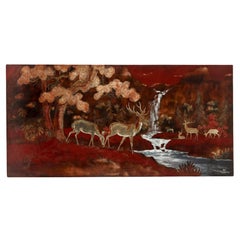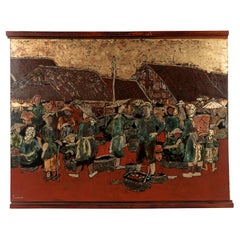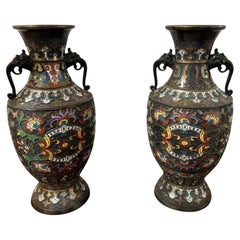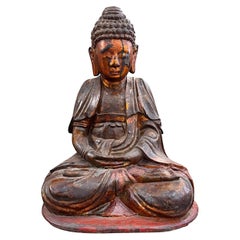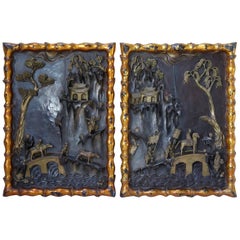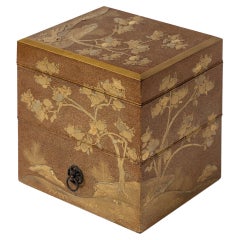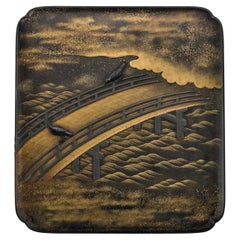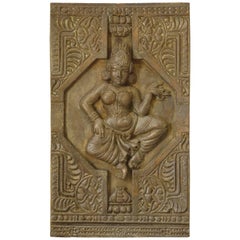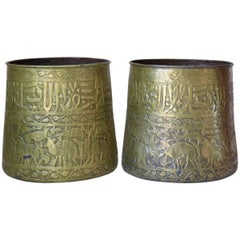South of France - Asian Art and Furniture
1950s Vietnamese Vintage South of France - Asian Art and Furniture
Gold Leaf
20th Century Vietnamese South of France - Asian Art and Furniture
Gold Leaf
Mid-19th Century Antique South of France - Asian Art and Furniture
Bronze
Late 19th Century Vietnamese Edo Antique South of France - Asian Art and Furniture
Wood
16th Century Thai Tribal Antique South of France - Asian Art and Furniture
Sandstone, Gold Leaf
19th Century Unknown Chinese Export Antique South of France - Asian Art and Furniture
Beech
19th Century French Antique South of France - Asian Art and Furniture
Wood
17th Century Burmese Medieval Antique South of France - Asian Art and Furniture
Terracotta, Lacquer
2010s French Minimalist South of France - Asian Art and Furniture
Leather
1860s Japanese Antique South of France - Asian Art and Furniture
Lacquer
Early 19th Century Japanese Japonisme Antique South of France - Asian Art and Furniture
Stone, Metal
1750s Japanese Edo Antique South of France - Asian Art and Furniture
Gold, Bronze, Gold Leaf
Early 19th Century Vietnamese Antique South of France - Asian Art and Furniture
Wood
Late 19th Century Japanese Meiji Antique South of France - Asian Art and Furniture
Wood, Cedar
Early 1900s Japanese Meiji Antique South of France - Asian Art and Furniture
Earthenware, Pottery
18th Century Japanese Edo Antique South of France - Asian Art and Furniture
Cypress
19th Century Chinese Antique South of France - Asian Art and Furniture
Mid-19th Century Japanese Edo Antique South of France - Asian Art and Furniture
Wood, Lacquer
18th Century Thai Tribal Antique South of France - Asian Art and Furniture
Bronze
16th Century Thai Antique South of France - Asian Art and Furniture
Sandstone
Early 17th Century Thai Other Antique South of France - Asian Art and Furniture
Bronze
Mid-20th Century French South of France - Asian Art and Furniture
Fiberglass, Paint
Mid-20th Century Unknown South of France - Asian Art and Furniture
Copper
Mid-19th Century Indian Antique South of France - Asian Art and Furniture
Late 19th Century French Japonisme Antique South of France - Asian Art and Furniture
Read More
Symbols of Happiness and Rebirth Adorn This Japanese Satsuma Bowl
Decorated with white cranes and the sought-after thousand-butterflies motif, the Meiji-period vessel offers both a celebration of traditional aesthetics and a clear reflection of the era’s appetite for exquisite export pieces.
Chicago’s Pagoda Red Has a Spirited Mix of Asian Antiques and Bold New Art
For 25 years, gallerist Betsy Nathan has leveraged her keen eye and key connections to bring a unique selection of rare finds to the market.
In L.A., Gallerist JF Chen Has Long Championed Eclectic Blue-Chip Design
Now working alongside his daughter Bianca, dealer Joel Chen has presented a most covetable array of antiques, art and contemporary creations for more than 40 years.
12 Calming Spaces Inspired by Japanese Design
From cherry-blossom-adorned walls paired with glamorous lighting to wood-paneled ceilings above checkerboard-patterned chairs, these 12 spaces seamlessly blend Eastern and Western aesthetics.
Rodrigo Rivero Lake’s Mexico City Showroom Is a Museum-Worthy Trove of Spanish Colonial and Asian Antiques
The dealer and curator has spent the past 50 years amassing a collection of exceptional art, furniture and architectural elements that trace the cultural influence of the Spanish empire from Europe to the Americas and beyond.
16 Refined Asian-Inspired Interiors
These spaces exemplify how Eastern elements elevate a home's decor.
